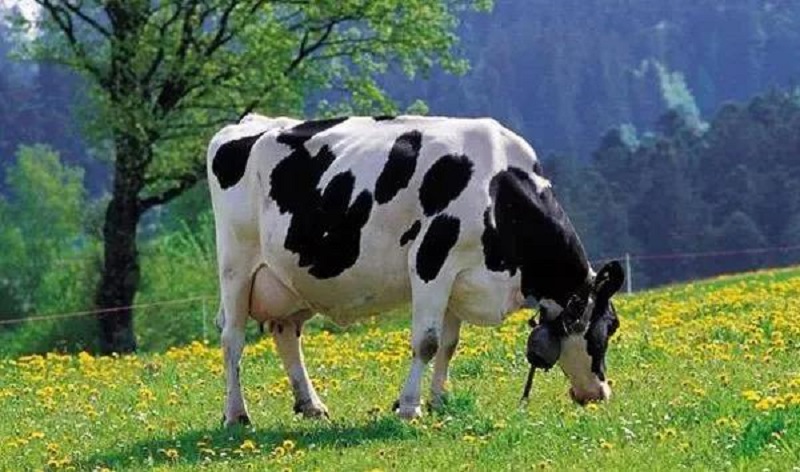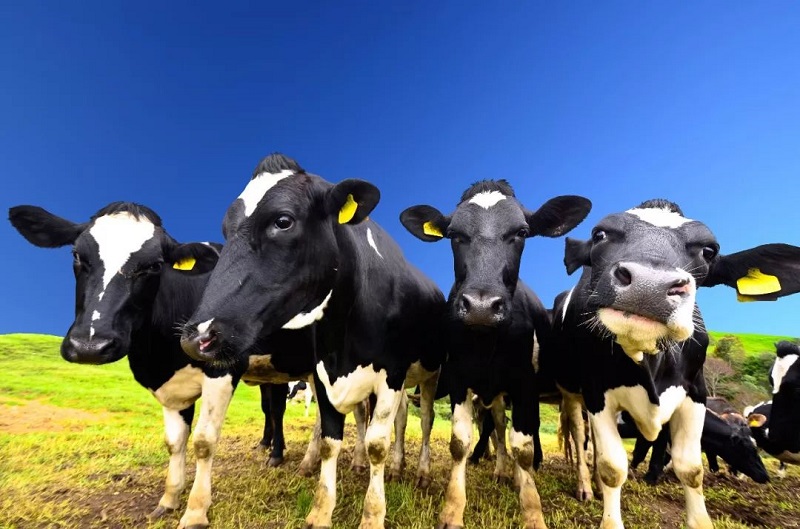The peak lactation period of dairy cows is the key stage of dairy cow breeding. The milk production during this period is high, accounting for more than 40% of the total milk production during the entire lactation period, and the physique of the dairy cows at this stage has changed. If the feeding and management are not proper, Not only will the cows fail to reach the peak milk production period, the peak milk production period lasts for a short time, but it will also affect the health of the cows. Therefore, it is necessary to strengthen the feeding and management of dairy cows during the peak lactation period, so that the lactation performance of the dairy cows can be fully utilized, and the duration of the peak milk production period shall be extended as much as possible, thereby increasing the milk production and ensuring the health of the dairy cows.
The peak lactation period of dairy cows generally refers to the period of 21 to 100 days postpartum. The characteristics of dairy cows at this stage are good appetite, high demand for nutrients, large feed intake, and high lactation. Insufficient feed supply will affect the lactation function of dairy cows. The peak lactation period is a critical period for dairy cow breeding. The milk production at this stage accounts for more than 40% of the milk production during the entire lactation period, which is related to the milk production during the entire lactation period and also related to the health of the cows. Strengthening the feeding and management of dairy cows during the peak lactation period is the key to ensuring high yields of dairy cows. Therefore, reasonable feeding and management should be strengthened to promote the full development of dairy cows’ lactation performance, and extend the duration of the peak lactation period as much as possible to ensure the health of dairy cows. .
1. The characteristics of physical changes during peak lactation
The physique of dairy cows will undergo a series of changes during the lactation period, especially during the peak period of lactation, the milk production will be greatly increased, and the physique will undergo tremendous changes. After childbirth, physique and physical energy are consumed a lot. If it is a cow with a relatively long labor, the performance will be more serious. Coupled with postpartum lactation, the blood calcium in the cow will flow out of the body with the milk in a large amount, thus The digestive function of dairy cows is decreased, and in severe cases, it can also lead to postpartum paralysis of dairy cows. At this stage, the milk production of dairy cows is at its peak. The increase in milk production will lead to an increase in dairy cows’ demand for nutrients, and the intake of nutrients cannot meet the nutritional needs of dairy cows for high milk production. It will use physical energy to produce milk, which will cause the weight of dairy cows to begin to drop. If the milk cow’s long-term nutrient supply is insufficient, the dairy cows lose too much weight during the peak lactation period, which will inevitably produce extremely unfavorable consequences. Reproductive performance and future lactation performance will have extremely adverse effects. Therefore, it is necessary to carry out targeted scientific feeding and management according to the changing characteristics of the physique of dairy cows during the peak lactation period to ensure that they take in sufficient nutrients and recover their physical fitness as soon as possible.
2. Feeding during peak lactation
For dairy cows at the peak of lactation, it is necessary to select a suitable feeding method according to the actual situation. The following three feeding methods can be selected.
(1) Short-term advantage method
This method is more suitable for cows with moderate milk production. It is to increase the supply of feed nutrition during the peak lactation period of the dairy cow, so that the dairy cow can obtain sufficient nutrients to strengthen the milk production of the dairy cow during the peak lactation period. Generally, it starts 20 days after the cow is born. After the cow’s appetite and feed intake return to normal, on the basis of maintaining the original feed, an appropriate amount of mixed concentrate of 1 to 2 kg is added to serve as an “advanced feed” to increase milk production during the peak period of milk cow’s lactation. If there is a continuous increase in milk production after increasing the concentrate, you need to continue to increase it after 1 week of feeding, and do a good job of observing the milk production of the cows, until the milk production of the cows no longer rises, stop Additional concentrate.
(2) Guided breeding method
It is mainly suitable for high-yielding dairy cows. The use of this method for middle-to-low-yielding dairy cows can easily cause the weight of the dairy cows to increase, but it is not good for the dairy cows. This method uses high-energy, high-protein feeds to feed dairy cows within a certain period of time, thereby greatly increasing the milk production of dairy cows. The implementation of this law needs to start from the perinatal period of the cow, that is, 15 days before the cow gives birth, until the milk production after the cow reaches the peak of lactation. When feeding, with the original feed unchanged in the dry milk period, gradually increase the amount of concentrate fed every day until the amount of concentrate fed reaches 1 to 1.5 kg of concentrate per 100 kg body weight of the dairy cow. . After the cows have given birth, the feeding amount is still increased according to the daily feeding amount of 0.45 kg of concentrate, until the cows reach the peak lactation period. After the peak lactation period is over, it is necessary to adjust the feeding amount of the concentrate according to the cow’s feed intake, body weight, and milk production, and gradually transition to the normal feeding standard. When using the guided feeding method, pay attention to not blindly increase the amount of concentrate feeding, and neglect to feed the forage. It is necessary to ensure that the cows have sufficient forage intake and provide sufficient drinking water.
(3) Replacement breeding method
This method is suitable for cows with average milk production. In order to make this type of cows enter the peak lactation smoothly and increase the milk production during the peak lactation, it is necessary to adopt this method. The replacement feeding method is to change the ratio of various feeds in the diet, and use the method of alternately increasing and reducing the amount of concentrate feeding to stimulate the appetite of the dairy cows, thereby increasing the intake of the dairy cows, increasing the feed conversion rate, and increasing the production of the dairy cows. Milk volume. The specific method is to change the structure of the ration every one week, mainly to adjust the ratio of concentrate and forage in the ration, but to ensure that the total nutrient level of the ration remains unchanged. By repeatedly changing the types of diets in this way, not only can the cows maintain a strong appetite, but also the cows can obtain comprehensive nutrients, thereby ensuring the health of the cows and increasing milk production.
It is worth noting that for high production, increasing the amount of concentrate feeding to ensure the milk production at the peak of lactation is easy to cause nutritional imbalance in the milk cow’s body, and it is also easy to cause excessive stomach acid and change the milk composition. It can cause other diseases. Therefore, rumen fat can be added to the diet of high-yielding dairy cows to increase the nutritional level of the diet. This is useful for increasing milk production, ensuring milk quality, promoting postpartum estrus and increasing the conception rate of dairy cows. Help, but pay attention to controlling the dosage, and keep it at 3% to 5%.
3. Management during peak lactation
Dairy cows enter the peak of lactation 21 days after delivery, which generally lasts for 3 to 4 weeks. Milk production begins to decline. The extent of the decline must be controlled. Therefore, it is necessary to observe the milk cow’s lactation and analyze the reasons. In addition to reasonable feeding, scientific management is also very important. In addition to strengthening daily environmental management, dairy cows should focus on nursing care of their udders during the peak period of lactation to prevent cows from suffering from mastitis. Pay attention to standard milking actions, determine the number and time of milking each day, avoid rough milking, and massage and heat the breasts. The milk production of cows is high during the peak period of lactation. This stage can be appropriate Increasing the frequency of milking to fully release the pressure on the breasts is very important for promoting lactation. It is necessary to do a good job of monitoring mastitis in dairy cows, and promptly treat the disease once it is found. In addition, it is necessary to strengthen the exercise of the cows. If the amount of exercise is insufficient, it will not only affect the milk production, but also affect the health of the cows, and also have an adverse effect on the fecundity. Therefore, the cows must maintain an appropriate amount of exercise every day. Adequate drinking water during the peak lactation period of dairy cows is also very important. At this stage, dairy cows have a large demand for water, and sufficient drinking water must be provided, especially after each milking, the cows must drink water immediately.
Post time: Aug-04-2021




.png)
.png)
.png)
.png)